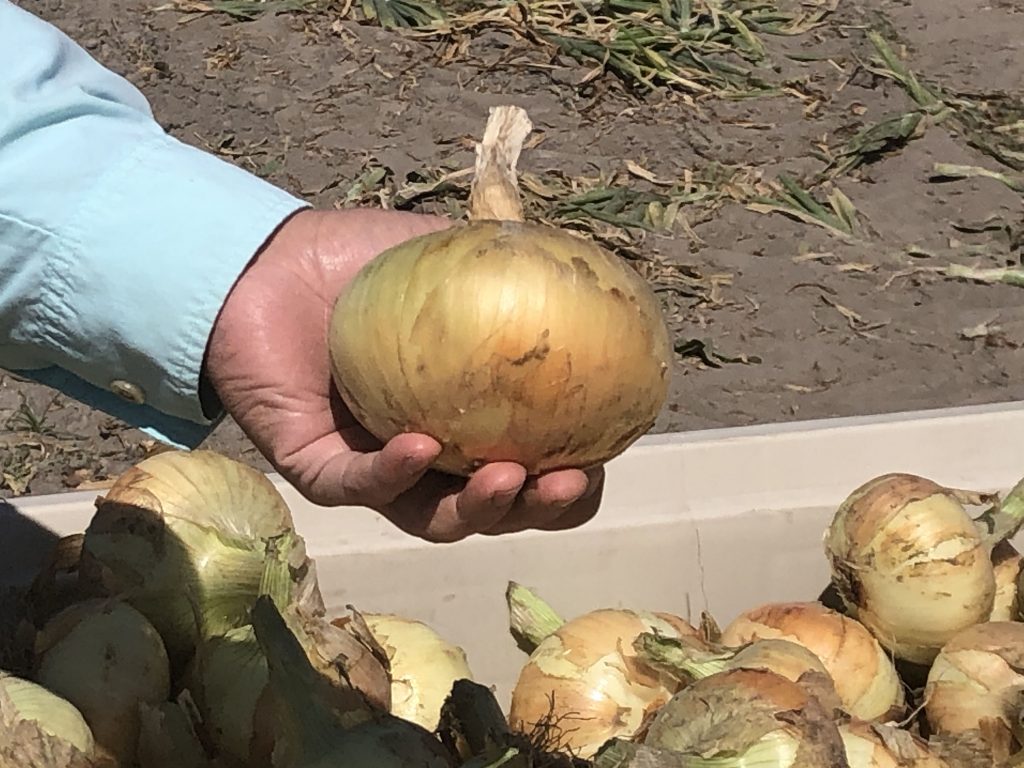By Clint Thompson
A frigid weekend in the forecast for Southeast Georgia could impact the Vidalia onion plants in the ground. Chris Tyson, UGA Extension area onion agent, talked about what producers can expect with the looming sub-freezing temperatures.

“Friday night is like the coldest it looks like. Right now, for Reidsville (Georgia), they’re calling for 18 degrees (Fahrenheit) and then 20 degrees for the two nights after that,” Tyson said. “That kind of cold could cause some injury to the plants and it could cause some stand loss. We’ll just have to wait and see what happens. There’s really not much that growers can do, really. We don’t do frost protection like other commodities.
“We’ll just have to see what we get. It’s possible to get some stand loss and some injury, so we’ll just have to see.”
Plants that were just planted within the last two weeks have not developed a strong root system yet, so they are more susceptible to the colder temperatures. Plants that have been in the ground longer than a couple of weeks have a root system, some growth and built-up energy. Tyson expects those plants to be in better shape to withstand temperatures in the teens.
While damage to plants is a possibility, growers still prefer sub-freezing temperatures now than in the early spring when a bulb has formed.
“We would rather have 18 to 20 degrees early on in the season than we would have in March. The crop has got a bulb on it, and it’s more susceptible to freezing the bulb. That’s not critical at this point yet, especially on much younger plants,” Tyson said. “In recent years when we’ve had a bad cold, I think in 2015 we got down into the teens, and we saw some stand loss in a lot of fields. The crop compensated for it later in the season, and we had a pretty good harvest. We’ll just have to see what it does. It will definitely be harsh for those onions.”
Tyson also advises growers to wait at least several days before evaluating any potential damage to their crop.
“The longer you wait to give it a full evaluation the better. You may be able to see frost injury a day or two after, but if we’re going to have three really cold nights, honestly, the next week we’ll probably be able to tell. If it’s cold enough and freezes all the foliage that plant has put on, the plant may or may not put on new foliage, so it’s probably better to wait a week or two to get a better picture than a day or two after,” Tyson said.









